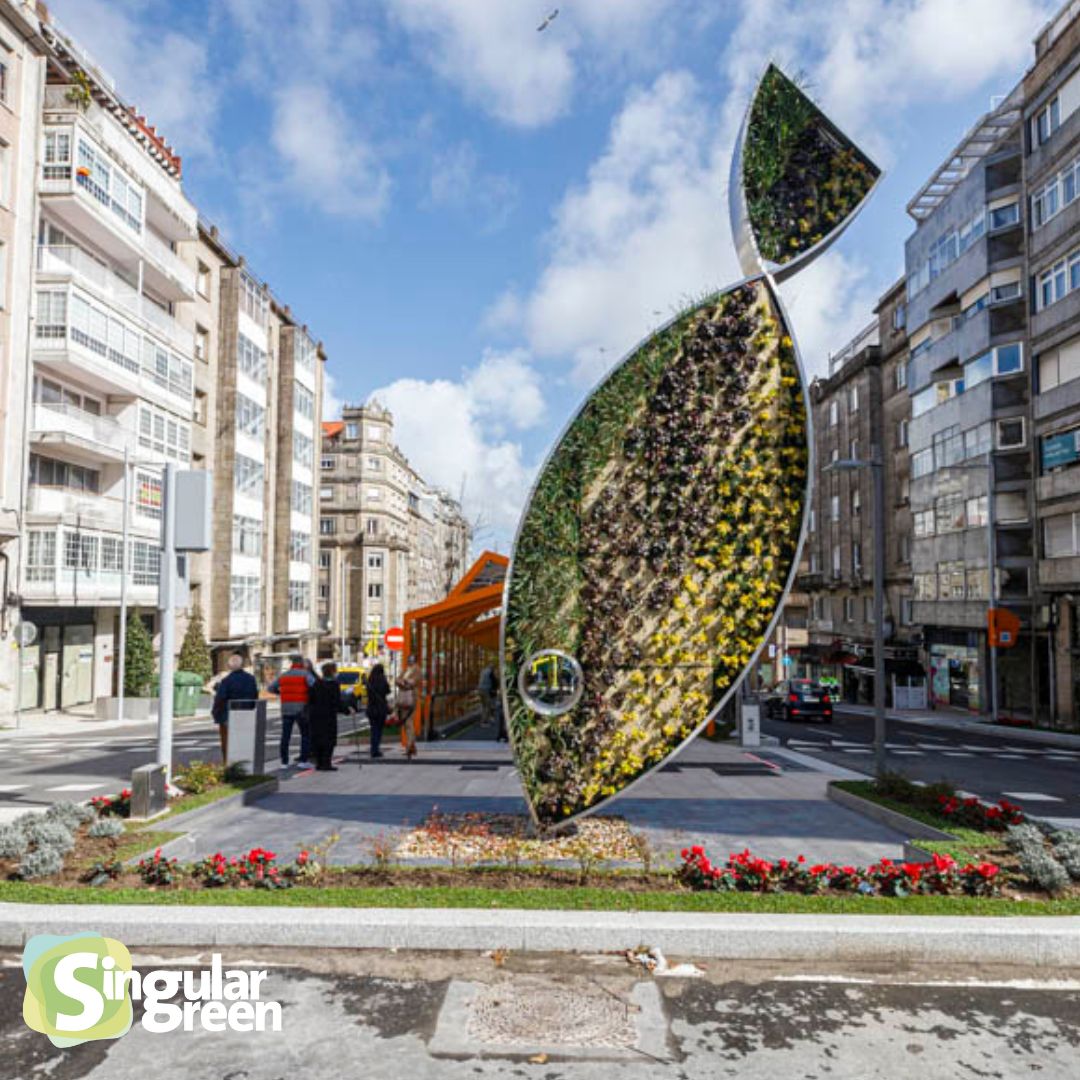Drip irrigation has become a highly efficient solution for the irrigation of green roofs or green roofs, where proper water management is essential due to both weight limitations and the diversity of species that may be present.
We will now take a closer look at how it works, its benefits, and the different types of drippers that can be found in this type of system.

What is a rooftop drip system?
A roof drip system is a network of pipes that distributes water in an efficient and localised way, applying the resource just where it is needed. This method keeps the plant substrate moist, avoiding losses due to evaporation or excessive drainage.
Benefits of drip irrigation on green roofs
Implementing drip irrigation on green roofs offers multiple advantages:
- Efficient water use: Water wastage is reduced, as the liquid is applied directly to the root of each plant, minimising evaporation.
- Avoid waterlogging: On flat surfaces such as roofs, watering can saturate the substrate. Drip irrigation allows a gradual supply, avoiding puddles or excess moisture.
- Energy saving: By working with low pressure, energy consumption in the irrigation system is also optimised.
Dripper types in drip systems
One of the key factors for efficient drip irrigation on green roofs is the selection of the right dripper type. Here are the main types:
Pinch drippers
These are the simplest and most economical option. These drippers are placed directly on a blind pipe, by drilling a small hole where they are inserted. This type of dripper allows you to place each water outlet in specific points, ideal for areas with irregularly distributed plants.
Threaded drippers
These work in a similar way to the pinch drippers, but are screwed into the pipe, allowing for a tighter connection. They are useful in systems where water pressure varies, ensuring that the dripper stays in place.
Integrated drippers
These come pre-installed inside the pipe and are distributed evenly along the entire length of the irrigation line, often every 30 cm. This option is ideal for larger areas, such as evenly distributed lawns or plantings.
Use of microtubes on green roofs
In areas where very specific irrigation is required, micro-tubes connected to a main dripper can be used. These allow water to be delivered to very specific points, such as the base of shrubs or larger plants that require more water.
Flow rate and efficiency in drip systems
Flow regulation is a key issue in green roofs, as these areas often have a mixture of plants with different water requirements. In this context, self-compensating and anti-drainage drippers are essential.
Self-compensating drippers
These devices are activated only when the pressure inside the pipe reaches a suitable level, ensuring a uniform flow rate throughout the installation, regardless of the length of the system or differences in height. They are ideal for green roofs where the water must reach different points evenly.
Anti-drainage drippers
They are essential for sloping surfaces. These drippers close when the pressure drops, preventing water from draining to the lowest points at the end of irrigation, which could cause waterlogging in those areas and dryness in others.
Installation of the drip system on green roofs
Essential system components
To install a drip system on a green roof, you will need:
- Main and secondary pipes: To distribute the water from the source to the watering points.
- Drippers: As mentioned above (pricked, threaded, integrated or with microtubes).
- Filters and pressure regulators: To ensure a constant flow of water without clogging.
- Irrigation controllers: These are key to automating the system and ensuring that watering is carried out regularly and accurately.
Considerations for large green roofs
On large landscaped areas, the distribution of irrigation lines must be balanced to ensure a uniform supply of water. The choice of drippers and the spacing between drippers will depend on the type of plants on the roof. More water-demanding species may need more watering points or drippers with higher flow rates.
Conclusion
Installing a drip irrigation system on green roofs is an efficient and sustainable solution that ensures healthy plant growth while optimising water consumption. The key is to choose the right components, especially drippers, and adjust the flow rate according to the needs of the space.
Your personal experience demonstrates a deep knowledge of drip system configuration, and the details you have shared on selfcompensating and anti-drainage drippers are of great value to those seeking accurate and technical information on this subject. Thank you for your input.







